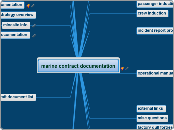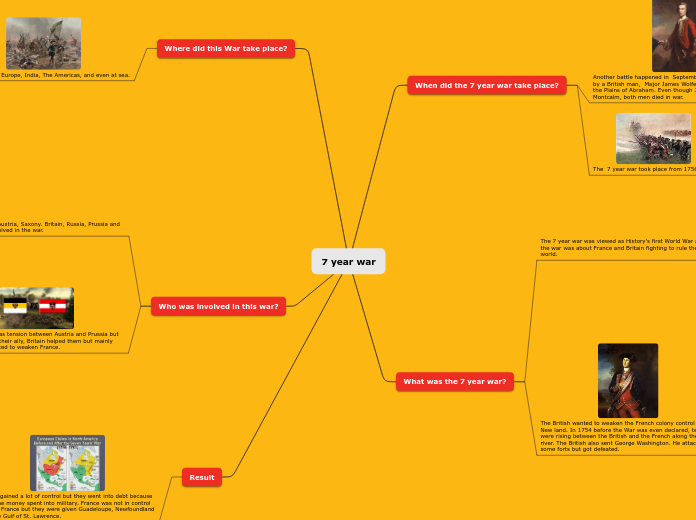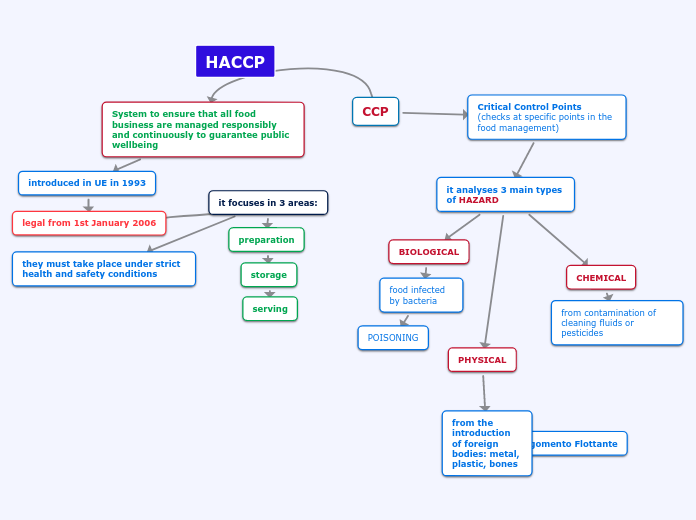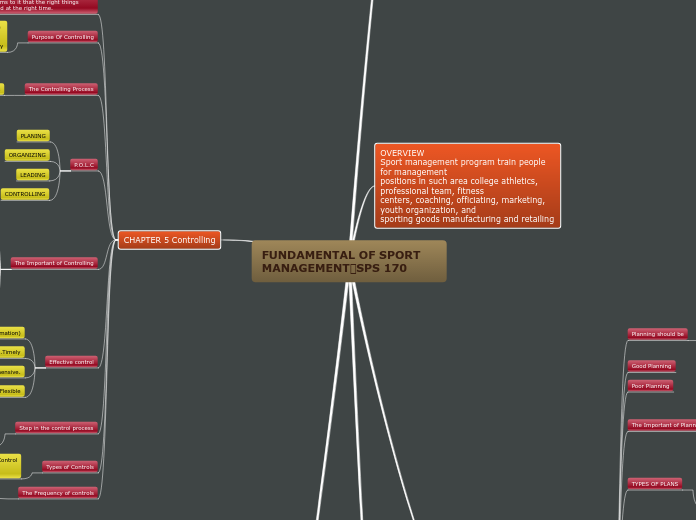marine contract documentation
cyclone
??????
watch
out is standard watch must be kept approriate to conditions
gulf warrior
factory gulf fortress
draft document list
risk assessment tool
sms plan
emergency procedures
emergency station list
display
Display of emergency station lists
The emergency station list shall be exhibited in conspicuous places throughout the vessel including the wheelhouse and crew accommodation spaces on vessels where at least one of the following applies:
a) The number of crew exceeds 4.
b) There are one or more berthed passengers.
c) There are more than 36 un-berthed passengers.
d) The voyage is in excess of 12 hours.
NOTE: On vessels where the emergency station list is not displayed, crew members should have ready access to the information in written form, for example in the Emergency Plan. For vessels that have a verbal emergency plan, knowledge of emergency stations should be regularly checked.
3.10.4 Display of emergency information for passengers
Illustrations and instructions shall be provided in passenger cabins and be conspicuously displayed at assembly stations and other passenger spaces to inform passengers of—
a) their assembly station;
b) the essential actions they must take in an emergency; and
c) the method of donning lifejackets.
NOTE: This may be in the form of signs, notices, and emergency brochures. The level and method of information provided should be appropriate to the vessel, duration of voyages and nature of the operation.
passenger induction manual
basic outline structure as provided
1.1. PURPOSE AND SCOPE
1.2. RESPONSIBILITIES
1.3. INDUCTION STRUCTURE
1.4. PROJECT INDUCTORS
1.5. INDUCTION STRUCTURE
1.6. VERIFICATIN OF TRAINING
1.7. RECORDS
1.8. INDUCTION REGISTER
1.9. INDUCTIONDISCUSSION
1.10. ORIENTATION
1.11. FOLLOW UP
1.12. FORMS
see existing documentation for framework, needs some real work
medical advice
safety management system documentation
master document checklist
system review schedule/process
document control process
see example for dpi for up north
operational procedures
fire safety documentation
crew induction manual
passenger manifest
A passenger manifest shall be maintained for all passenger-carrying vessels on voyages that are of more than 12 hours duration. For all other passenger-carrying vessels a head count of the passengers on board at any time shall be maintained. Where a passenger manifest is required a copy shall be retained both—
a) on board the vessel; and
b) at a place on shore where it may be accessed quickly in an emergency.
The passenger manifest should as far as is practicable contain the following particulars:
i) The name of the vessel and official identification number.
NOTE: The identification number may be the vessel registration, survey number or any other form of unique identification required by an Authority.
ii) Details of voyage.
iii) Name and address (local and home where appropriate) of persons on board.
iv) Any other special customer or safety requirements.
create passenger manifest form, combine with crew manifest...
whiteboard tag on and off... system????
something that records which boat with which passenger and in which general direction
crew list
The crew list shall contain the following particulars:
a) The name of the vessel and official identification number.
NOTE: The identification number may be the vessel registration, survey number or any other form of unique identification required by an Authority.
b) The name of the owner, the owner’s address and contact details including phone number.
c) The name of the employer of the crew, the employer’s address and contact details including phone number.
d) In respect of every employee on the vessel:
i) The name and home address of each person in the crew.
ii) The name, address and contact details of each person’s next of kin.
iii) Capacity in which the person is employed.
iv) Dates of joining and leaving the vessel.
The crew list shall be kept up to date and readily available.
create crew list form
faraday2_documentation
minesite info
Subtopic
strategy overview
yearly review
document control
misc questions
external links
NSCV documentation
operational manual
example operations generic
a) Training.
b) Preparing for sea.
c) Watchkeeping.
d) Communicating with other vessels and shore agencies.
e) Navigating safely.
f) Participating in search and rescue activities.
g) Operating in restricted visibility.
h) Managing watertight integrity.
i) Managing the loading, carriage and discharge of dangerous goods and hazardous material.
j) Manoeuvring the vessel and alternative steering arrangements.
k) Mooring.
l) Anchoring.
m) Towing.
n) Transferring of people to and from the vessel.
o) Operating small boats or tenders.
p) Working aloft or overside.
q) Working with lines.
r) Operating plant and machinery.
s) Fuelling, oil pollution prevention and response.
t) Pumping of bilges.
u) Maintaining the vessel and its plant and equipment.
v) Entering and working in enclosed spaces.
w) Managing risks to the environment including:
i) Disposal of garbage.
ii) Disposal of waste oil and water (grey water).
iii) Disposal of sewage.
iv) Minimising noise pollution.
v) Minimising discharges to atmosphere.
vi) Anchoring appropriately in sensitive areas.
x) Recording details of crew and passengers.
y) Recording information in vessel’s logbook or engineering record book.
z) Reporting of incidents.
aa) Identification, analysis and control of hazards.
bb) Specialised operational tasks/requirements of the vessel.
cc) Using lifting devices.
dd) Cargo operations.
safety management system
The SMS shall, among other things—
a) provide for safe practices in vessel operation and a safe working environment;
b) establish means of identifying hazards and then eliminating or reducing risk to an acceptable level;
c) continuously improve the safety-management skills of personnel on shore and onboard vessels, including preparing for emergencies related both to safety and environmental protection;
d) facilitate compliance with mandatory rules and regulations including occupational health and safety, and environment protection legislation; and
e) ensure that applicable codes, guidelines and standards recommended by the International Maritime Organization, Authorities, classification societies and maritime industry organisations are taken into account.
exampl see demo docs
There are many types of operational procedures:
· Berthing (preparation for berthing, anchoring, mooring, operating tenders, shore trips, disembarking, securing
vessel)
· Preparation (crew briefing, maintenance checks, refuelling, start-up, pre-departure checks, passenger briefing)
· Voyage (navigating safely, watch keeping, communication, assessing sea/weather conditions, operating in
restricted visibility)
· Operations (specific operations, lifting devices, towing, working aloft)
· Hazards (identification, analysis, control)
· Managing environmental risks (disposal of sewage, disposal of garbage, disposal of waste oil, disposal of grey
water, pumping bilges, noise pollution).
Emergency Procedures
Emergency procedures need to be developed and documented so that personnel both onboard and shore based
are aware of what to do, and can practice for emergency situations. Crewmembers must carry out scheduled drills
to improve the competence and confidence of the vessel crew and shore based staff to ensure that the procedure
and resources meet the required performance standards. Records must be maintained (for at least five years) for:
· Fire
· Vessel Evacuation
· Man overboard/Search and Rescue
· Spillage of fuel/cargo
· Serious injury/Medical emergency.
The results of Emergency drills need to be assessed on board the vessel at the conclusion of the drill, and during
management review. Procedures for mobilising the Company’s response team and procedures for establishing
and maintaining contact between ship and shore management also needs contingency plans.
Fuel spill –
The fuel spill emergency procedure section should outline the following:
· organisation’s policy regarding marine environmental protection not just restricted to fuel and oil spills but
marine pollution in general, ie. Sullage, litter, cleaning etc;
· objectives eg. No spills from vessels refuelling; no spills or leaks from storage of fuel and oil; no spills from
hydraulic equipment on boats or equipment working near or in the marine environment;
· communication channels for incidents – who needs to be called, and who takes control of the incident;
· what determines the level of response to an incident. Tiered response;
· what equipment is available and where is it located. Reference to procedural document regarding use of
specific pieces of equipment;
· reporting – the Department for Planning and Infrastructure’s Marine Pollution Reports;
· maintenance of the plan – who reviews and updates the emergency procedures;
· who is responsible for making sure all personnel are trained appropriately; and
· record the spillage and action taken in the Vessel Log Book.
Vessel capsize/Injury must take into consideration:
· How person would be retrieved
· How an incident could be communicated and to whom
· How could people who are in the water be safe from hazards such as crocodiles
· Where injured persons would be taken
· First aid available
· Time taken for medical aid to arrive.
reporting/documentation
The SMS must include a procedure for the control of SMS documentation, so that the appropriate documents are
available at all relevant locations, changes to the documents are reviewed and approved by relevant personnel
and obsolete documents are promptly removed.
Records must be legible, identifiable and traceable to the activity involved, and should be stored in such a way that
they are readily retrievable and protected against damage, deterioration or loss. The SMS system must document
the process used to review, approve, distribute and control the SMS documentation.
Record Keeping:
· Vessel Log Book – stored on the vessel, and may include emergency drills conducted, procedure audits, voyage
details, passenger details, incidents and maintenance records.
· Crew Details – records of the names and contact details of all crew, as well as their qualifications and training
records. Usually maintained in the shore facilities.
· Passenger Log – log of passengers must be maintained on the vessel of all voyages. The level of detail will be
dependent on the operation of the vessel.
· Incident Reporting – the Vessel Log Book could be used to record all incidents. Examples of what needs to be
recorded includes accidents, near misses, fires, explosions, injuries, pollution incidents. Each incident report
should identify what has occurred, where, when, who was involved and what immediate action was taken
to address the incident. Records of the analysis of the incident should also be maintained, along with the
corresponding actions taken, and these records are typically maintained in shore based facilities.
· Engineering Record Book – records of maintenance and repair of machinery and equipment must be
maintained. The Vessel Log Book can also keep these records.
· Emergency Drills – conduct and results of emergency drills need to be maintained, generally in the Vessel Log
Book, as well as the schedule for the drills. If the results of the drills do not meet required standards then the
records need to show immediate actions taken to rectify the situation.
risk table example form
fire safety manual
part c4 of standards:
CHAPTER 5 FIRE SAFETY PREPAREDNESS ................................................. 67
5.1 Application..................................................................................... 67
5.2 Objective ....................................................................................... 67
5.3 Fire control plan ............................................................................ 67
5.4 Training manual ............................................................................ 68
5.5 Fire safety operational booklet....................................................... 69
emergency plan
Emergency plan
Assembly stations, signals, escape routes, evacuation routes, location of life saving equipment, flares, EPIRB, lifebuoys, immersion suits. On vessels of length less than 50 metres, the damage control, fire and emergency plans may be combined in a single drawing
Vessels 35 m and more and passenger vessels 25 m and more
fighting a fire
Fighting a fire
The most important consideration is human life, the boat is secondary.
Raise the alarm and make a head count.
Get someone to make a Pan Pan radio call.
Get someone to take charge of the safety gear and move the passengers as far as possible from the fire.
If the fire is within an enclosed space, close all openings to reduce air supply to the fire.
Close off fuel lines and gas lines.
Try to put out the fire with extinguishers, fire blanket, water buckets or whatever is appropriate.
The best way to deal with burning items may be simply to throw them over the side.
When the fire is apparently out, still keep an eye on it and on adjoining spaces; fires can restart.
Chemical extinguishers do not cool fires – consider using water to cool after the flames are extinguished.
fire control plan
Fire control plan
Location and type of active and passive fire safety systems on board the vessel, control stations, location of divisions, fire alarms, fire detection and extinguishing systems, fire-extinguishing appliances, access to compartments and decks, ventilating systems, location of international shore connection if fitted, fire suits, breathing apparatus
Vessels 35 m and more and passenger vessels 25 m and more
evac map
galley
causes of fire general
Some causes of fires:
overheated oil on galley stove;
overloaded or incorrectly wired electrical system;
poor engine room housekeeping – rags in contact with turbocharger or exhaust system;
leaking fuel or gas lines; or
poor refuelling technique.
engine room
cabin/crew quarters
incident report process
firstaid kit contents
risk management
Risk Management Checklist
Checklist Description Tick
Emergency Preparation
Assembly stations There is a process for checking that all people onboard can be accounted
for and readied for further emergency actions
c
Person overboard Crew are practised at recovering a person from the water c
Fire There is an organised response to a fire in any area of the vessel c
Collision/
grounding
There is an organised response for actions following a collision or
grounding
c
Flood Crew are practised at response to a flood situation c
Abandon ship There is an organised response to a decision to evacuate the vessel c
Severe weather There is a plan to secure the vessel in the event of severe weather c
Serious
injury/medical
emergency
There is a plan to provide medical assistance, obtain expert advice and
provide evacuation c
Seamanship
Preparing for sea The readiness of the vessel and crew and, the weather and crew are
systematically checked prior to commencing operation
c
Watch keeping Manning and layout arrangements allows a safe watch to be kept at all
times
c
Communications The communications equipment is adequate, is in good order and working.
It is regularly tested
c
Navigation Navigation equipment is adequate, is in good order and watch keepers are
competent with its use. It is regularly tested
c
Search and rescue Crew are trained at carrying out their duties should the vessel be involved
in a search and rescue incident
c
Restricted
visibility
The vessel crew are trained and practised at operating the vessel in
restricted visibility
c
15
Sample Documents
Checklist Description Tick
Management
of watertight
integrity
Arrangements to prevent uncontrolled flooding are understood by each
crew member c
Dangerous good
and hazardous
material
The carriage of dangerous goods and hazardous materials is managed to
minimise risk to the people, vessel or the environment c
Manoeuvring
and steering
Crew is practised at alternative steering arrangements
c
Mooring Crew is practised at mooring the vessel c
Anchoring Crew is practised at anchoring the vessel c
Towing The crew are practised at rigging a tow c
Transferring
people to and
from the vessel
Each crew member is practised at transferring people to and from the
vessel c
Operating boats
and tenders
Crew required to work in boats and tenders have been trained in their safe
operation. See Appendix A for everyday requirements.
c
Working aloft or
over the side
All crew understand the precautions when working aloft or over the side
c
Working
with lines
All crew understand the dangers and know how to work with lines under
strain
c
Passenger
safety briefing
Passengers are provided with safety information to enable them to
minimise their exposure to risk. See Appendix A for everyday requirements
c
Machinery & Maintenance
Operating
machinery
Crew are trained in the safe use of machinery as appropriate to their duties
c
Refuelling Any risk of pollution is minimised whilst refuelling c
Pumping of bilges Arrangements permit the bilges to be kept clean and oil free to prevent the
discharge of oil overboard
c
Maintenance of
the vessel and
machinery
There is a regular system of maintenance to ensure the vessel and
machinery are in safe, working order c
Enclosed spaces All crew understand the dangers of enclosed spaces on board and
wherever else their duties may require them to work. They understand the
precautions before entering
c
incident report form
hazard levels
hazard levels:
frequent—
where an occurrence is likely to occur often during the operational life of a particular vessel (probability more than 10-3 per hour or per journey, whichever is the lesser period of time).
reasonably probable—
where an occurrence is unlikely to occur often but which may occur several times during the total operational life of a particular vessel (probability between 10-3 and 10-5 per hour or per journey, whichever is the lesser period of time).
remote—
where an occurrence is unlikely to occur to every vessel but may occur to a few vessels of a type over the total operational life of a number of vessels of the same type (probability between 10-5 and 10-7 per hour or per journey, whichever is the lesser period of time).
very remote—
where an occurrence is unlikely to occur when considering the total operational life of a number of vessels of the type, but nevertheless should be considered as being possible (probability between 10-7 and 10-9 per hour or per journey, whichever is the lesser period of time).
improbable—
where an occurrence is so extremely remote that it should not be considered as possible to occur (probability less than 10-9 per hour or per journey, whichever is the lesser period of time).
consequence levels
The various levels of hazard consequence are as follows4:
minor—
an effect which can be readily compensated for by the operating crew. It may involve one or more of the following:
a) A small increase in the operational duties of the crew or in their difficulty in performing their duties.
b) A moderate degradation in handling characteristics.
c) Slight modification of the permissible operating conditions.
major—
an effect which produces one or more of the following:
a) A significant increase in the operational duties of the crew or in their difficulty in performing their duties which by itself should not be outside the capability of a competent crew provided that another major effect does not occur at the same time.
b) Significant degradation in handling characteristics.
c) Significant modification of the permissible operating conditions, but will not remove the capability to complete a safe journey without demanding more than the normal skill on the part of the operating crew.
hazardous—
an effect which produces one or more of the following:
a) A dangerous increase in the operational duties of the crew or in their difficulty in performing these duties of such magnitude that they cannot reasonably be expected to cope with them and will probably require outside assistance.
b) Dangerous degradation of handling characteristics.
c) Dangerous degradation of the strength of the vessel.
d) Marginal or actual conditions for, or injury to, occupants.
e) An essential need for outside rescue operations.
catastrophic—
an effect which results in the loss of the vessel and/or fatalities.
crew induction
passenger induction
from faraday2 previous
1 Responsibilities
2 Personal protective equipment
3 First Aid
4 Emergency Assistance
5 Equipment & Procedures
6 Access restrictions
7 Environmental protection
8 Reporting incidents and hazards
9 General behavior
10 Discrimination & harassment
11 Achieving world’s best practice standards
manifest
maintenance plan









